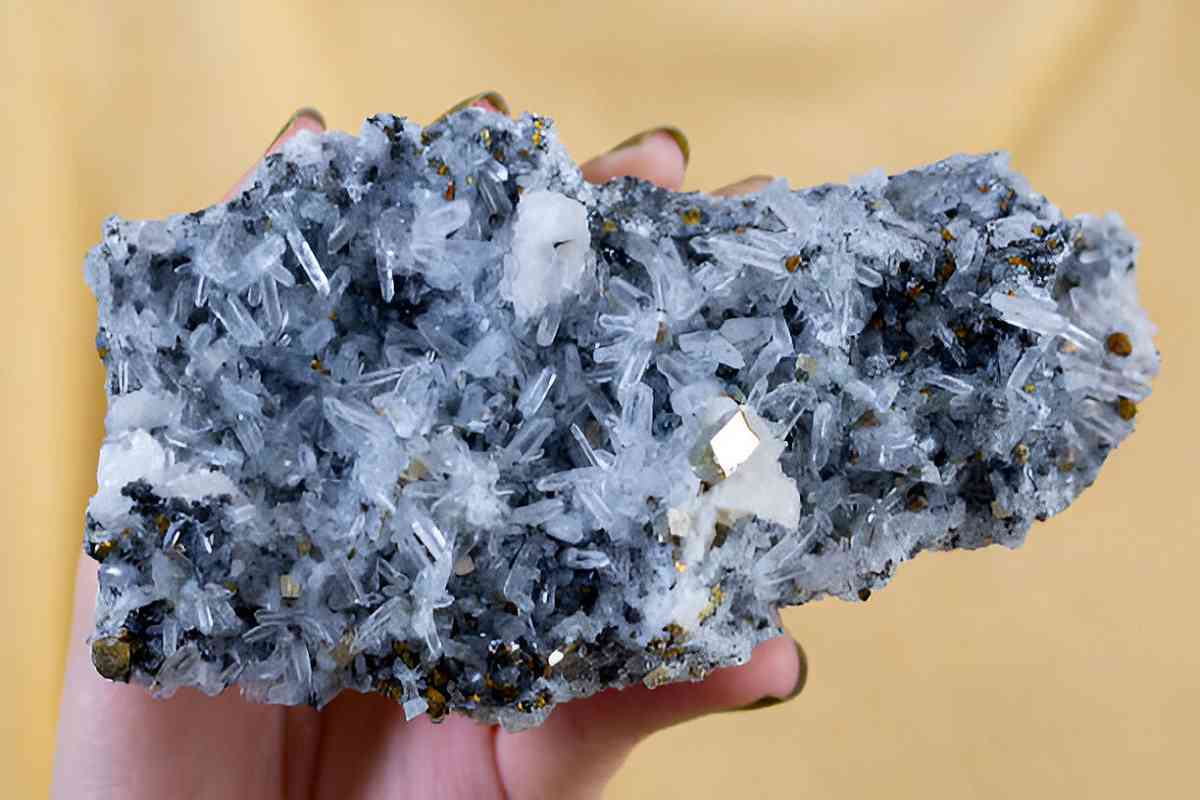The Rock Tech Lithium Forum has emerged as a significant platform for discussing the past, present, and future of lithium as an essential element in our global transition to renewable energy. With its numerous applications, particularly in electric vehicles and energy storage, lithium has become a commodity of great interest. This article delves into various aspects of lithium as discussed during the forum, reflecting on technological advancements, regulatory challenges, and the broader implications for sustainability.
The Role of Lithium in the Transition to Renewable Energy
Lithium plays a pivotal role in the shift toward renewable energy. As we seek to reduce our carbon footprint, lithium-ion batteries have become the go-to solution for storing and using renewable energy effectively. These batteries are not only capable of storing energy generated from renewable sources but also provide the necessary power for electric vehicles, which contribute to lowering greenhouse gas emissions.
Furthermore, the demand for energy storage solutions is growing as more countries commit to renewable energy targets. Lithium’s lightweight and high energy density make it ideal for applications in solar and wind energy systems, enhancing grid stability while facilitating the broader deployment of renewable technologies.
In addition to its applications in batteries, lithium is also crucial in the development of advanced energy storage systems, such as solid-state batteries, which promise even greater efficiency and safety. These next-generation batteries could revolutionize how we store energy, allowing for longer-lasting power sources that can withstand more charge cycles without degradation. As research continues to advance in this area, the potential for lithium to support a more sustainable energy future becomes increasingly evident.
Moreover, lithium’s role extends beyond just energy storage; it is integral to the manufacturing of various electronic devices that power our daily lives. From smartphones to laptops, lithium-ion technology is embedded in the fabric of modern electronics, driving the need for sustainable lithium sourcing practices. As we navigate the challenges of mining and production, the focus on environmentally friendly extraction methods and recycling initiatives is becoming paramount. This ensures that lithium can be harnessed responsibly, supporting not only the renewable energy transition but also the broader goal of sustainability across all sectors.
Innovations in Lithium Extraction Technologies
Innovation is critical in lithium extraction methods, and recent advancements are revolutionizing the industry. Traditionally, lithium has been extracted using hard rock mining or brine evaporation processes, both of which can have significant environmental impacts. These conventional methods often lead to habitat destruction, water depletion, and pollution, raising concerns among environmentalists and communities alike.
New technologies are now being developed to make lithium extraction more efficient and environmentally friendly. For instance, direct lithium extraction (DLE) offers a promising approach by using a process that draws lithium directly from brine, minimizing water usage and land disturbance. Such innovations not only reduce the ecological footprint of lithium mining but also accelerate the supply chain to meet burgeoning global demand. Additionally, advancements in membrane technology and solvent extraction are being explored to enhance the purity and yield of lithium, further optimizing the extraction process.
Moreover, researchers are investigating the potential of geothermal brines as a sustainable source of lithium. This method harnesses the heat from the Earth’s core, allowing for the simultaneous extraction of lithium while generating renewable energy. By tapping into geothermal resources, companies can not only secure lithium for battery production but also contribute to a greener energy landscape. This dual benefit positions geothermal brine extraction as a game-changer in the quest for sustainable lithium sources, aligning with global efforts to transition to renewable energy and reduce carbon emissions.
Another exciting development is the exploration of recycling lithium from spent batteries. As the demand for electric vehicles and renewable energy storage systems rises, the need for a circular economy in lithium sourcing becomes increasingly critical. Innovative recycling techniques are being designed to recover lithium from old batteries, thereby reducing reliance on virgin materials and minimizing waste. This approach not only conserves natural resources but also addresses the growing concern of electronic waste, showcasing how innovation in lithium extraction can lead to more sustainable practices across the industry.
Environmental Impacts of Lithium Mining
While lithium is crucial for sustainable energy solutions, its extraction presents serious environmental challenges. Mining operations can disrupt local ecosystems, deplete water resources, and contribute to pollution. The extraction methods employed heavily influence these impacts, with conventional methods often leading to significant resource wastage. For instance, traditional lithium extraction from hard rock mining can result in a considerable amount of waste rock and tailings, which can leach harmful substances into nearby soil and waterways, thereby threatening local flora and fauna.
Moreover, the water-intensive nature of lithium extraction, particularly in regions like South America where lithium brine is harvested, raises concerns about water scarcity. In areas already facing drought, the diversion of water for lithium mining can exacerbate existing tensions over water rights and availability. This has led to conflicts between mining companies and local communities, who rely on these water sources for agriculture and daily living. The ecological footprint of lithium mining extends beyond immediate extraction sites, affecting biodiversity and the health of entire ecosystems.
Regulatory oversight and responsible mining practices are essential in mitigating these effects. The forum emphasized the necessity for a balanced approach that prioritizes both resource extraction and ecological sustainability. Innovative technologies, such as direct lithium extraction (DLE), are being explored to minimize environmental impacts by reducing water usage and waste generation. Furthermore, the development of recycling programs for lithium-ion batteries could significantly lessen the demand for new lithium extraction, providing a more sustainable cycle for this critical resource. As the global community pushes for greener alternatives, addressing the environmental concerns related to lithium mining will be vital. The integration of sustainable practices in lithium mining not only protects the environment but also ensures the long-term viability of this essential resource for future generations.
The Global Lithium Supply Chain: Challenges and Opportunities
The global supply chain of lithium is currently facing several challenges, including supply shortages, geopolitical tensions, and fluctuating market dynamics. As demand for lithium skyrockets, securing stable supply routes has become increasingly critical for manufacturers and end-users.
However, these challenges also present numerous opportunities. Countries rich in lithium deposits, such as Australia, Chile, and Argentina, are exploring ways to enhance their production capabilities and diversify their markets. Additionally, collaborations between industries and governments can pave the way for a more resilient supply chain, ensuring that lithium is not only available but sustainable.
Lithium’s Role in Electric Vehicle Development
The electric vehicle (EV) boom has put lithium at the forefront of automotive innovation. With advancements in battery technology, lithium-ion batteries are essential for powering the next generation of electric vehicles. The demand for EVs is projected to continue growing, driven by consumer concerns about climate change and government incentives promoting electric mobility.
Manufacturers are increasingly investing in research and development to enhance battery performance, reduce charging times, and improve lifespan. As these innovations mature, lithium will remain a cornerstone component in making electric vehicles a viable alternative to traditional fossil fuel-powered transportation.
Market Trends and Predictions for Lithium Prices
Market dynamics for lithium are continually evolving. Current trends suggest that prices are on the rise due to increasing global demand, particularly from the automotive sector. Analysts predict that as more automakers transition to electric vehicles, the competition for lithium resources will intensify, which could lead to price volatility.
Monitoring these market trends is crucial for businesses and investors alike. The forum highlighted strategies for navigating the market, such as diversifying sourcing relationships and investing in sustainable mining technologies, which can alleviate some of the pressure on pricing while fostering stability in supply.
Key Players in the Lithium Industry: Who’s Who?
The lithium industry comprises several key players, each contributing uniquely to the market landscape. Major mining companies like Albemarle and SQM dominate lithium production, while newer entrants focused on innovative extraction techniques are gaining traction.
Furthermore, partnerships between established manufacturers and emerging technology companies are creating a dynamic ecosystem aimed at optimizing lithium usage in advanced applications. Stakeholders at the forum engaged in discussions on fostering collaboration within the industry to drive growth and sustainability.
Policy and Regulation: Shaping the Future of Lithium
Effective policy and regulation play a crucial role in shaping the future of lithium mining and usage. Governments worldwide are beginning to recognize the need for frameworks that support sustainable mining practices while also promoting innovation within the sector.
During the forum, experts discussed the importance of creating incentives for environmentally friendly practices and research funding for alternative extraction technologies. Balancing economic growth with ecological preservation will be fundamental as the lithium market continues to expand.
The Importance of Recycling Lithium Batteries
As the use of lithium batteries increases, so too does the importance of recycling them to mitigate environmental impacts. Recycling lithium-ion batteries can recover valuable materials, reduce waste, and decrease reliance on new material extraction.
Technological advancements are making battery recycling more efficient, and many companies are investing in systems to ensure the responsible end-of-life management of batteries. The forum highlighted best practices and policies that can encourage battery recycling, underscoring its significance in promoting a circular economy for lithium.
Insights from Industry Experts: Highlights from the Forum
The Rock Tech Lithium Forum brought together a diverse group of industry experts, each sharing valuable insights on the future of lithium. Key speakers discussed not only the technical aspects of lithium extraction and battery production but also the socio-economic implications of lithium mining in various regions.
These discussions provided a platform for networking and collaboration, fostering new initiatives aimed at addressing the pressing issues facing the lithium industry. Participants left with a deeper understanding of both the opportunities and challenges that lie ahead as lithium continue s to shape our transition to a more sustainable future.










